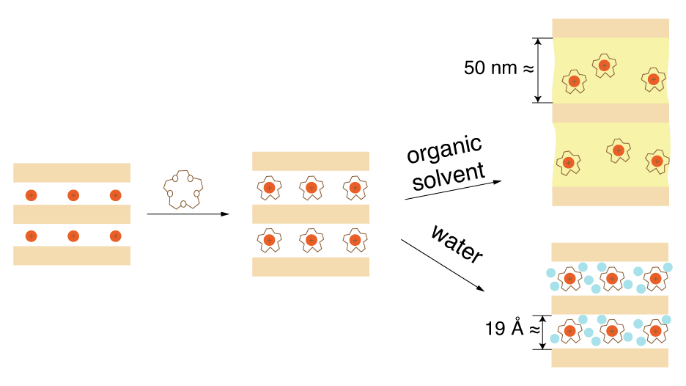Osmotic swelling as a key for perfect nanosheets dispersion: From water to organic solvents - poster
Dudko Volodymyr, Lina Mayr, Josef Breu
Department of Inorganic Chemistry I and Bavarian Polymer Institute, University of Bayreuth, Universitätsstr. 30, 95440 Bayreuth, Germany.
Contact Email:
Layered silicates have a wide range of applications due to their unique platelet like structure, high aspect ratio, and natural abundance. Particularly in nanocomposites, where silicates improve mechanical properties, decrease gas permeability and significantly enhance flame retardancy and thermal properties. In order to obtain these desirable properties, the delamination into single layers is essential; otherwise, the obtained composite exhibits micro-composite structure with two separate phases without a synergistic enhancement in properties.
The conventional method of liquid-phase exfoliation are not suitable for the fabrication of high aspect ratio filler due to high shear force exceeded on the clay particles, which leads to the diminishing of the aspect ratio. Osmotic swelling is an alternative method, which allows a gentle thermodynamically allowed delamination with the preservation of aspect ratio of pristine mineral. So far the osmotic swelling were limited to the water systems and the range of applications would be further expanded if clay delamination could be achieved in non-aqueous solvents. For this purpose, so-called “organophilic” clays have previously been developed but, quite often, the materials thus prepared show poor delamination.
We are going to present the straightforward methodology to achieve perfect delamination to the single platelets in organic solvents and water making possible numerous new formulations. The resulting dispersion is infinitely stable due to electrostatic stabilisation and can be processed with numerous industrial methods including slot die and spray coatings.


